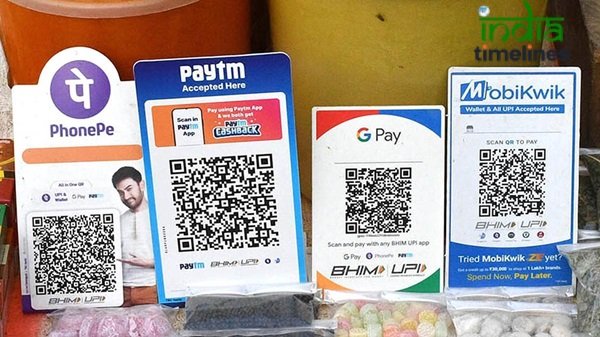
In a significant move that marks a new era in India’s digital payments landscape, the Unified Payments Interface (UPI) transaction limit has been increased from ₹1 lakh to ₹5 lakh per transaction. This enhancement is set to revolutionize how businesses, consumers, and financial institutions interact, offering greater flexibility, convenience, and security. As UPI continues to be the backbone of India’s digital economy, this development is poised to bolster its growth further and deepen its penetration across the country.
Understanding UPI: The Foundation of India’s Digital Economy
Unified Payments Interface (UPI), developed by the National Payments Corporation of India (NPCI), has emerged as a groundbreaking digital payments system. Launched in 2016, UPI enables instant money transfers between bank accounts using a mobile device. Its simplicity, efficiency, and widespread adoption have made it the preferred mode of digital transactions in India.
UPI’s success lies in its ability to integrate multiple bank accounts into a single mobile application, offering seamless transactions without the need for traditional banking processes. With over 250 banks on its platform and millions of users, UPI has redefined how Indians manage their finances, conduct business, and make everyday payments.
Why the Increase? Analyzing the Need for a Higher UPI Transaction Limit
The decision to raise the UPI transaction limit from ₹1 lakh to ₹5 lakh per transaction reflects the growing demand for higher-value digital transactions. Several factors have contributed to this need:
- Increased Digital Adoption: With the rise of digital banking, e-commerce, and online services, there has been a surge in high-value transactions. Consumers are increasingly relying on digital platforms for large purchases, investments, and bill payments.
- Business Transactions: Small and medium-sized enterprises (SMEs) and large corporations alike are leveraging UPI for their business transactions. The previous limit of ₹1 lakh was often a constraint for such entities, necessitating multiple transactions to complete a single payment.
- Growth in Investment Platforms: The popularity of online investment platforms has driven the need for higher transaction limits. Investors frequently use UPI for purchasing stocks, mutual funds, and other financial products, where the transaction value often exceeds ₹1 lakh.
- Support for Government Initiatives: The Government of India has been promoting digital payments as part of its broader vision of a cashless economy. Increasing the UPI limit aligns with this vision and supports various government-led financial inclusion initiatives.
Impact on Consumers and Businesses
The increase in the UPI transaction limit is expected to have far-reaching implications for both consumers and businesses. Here’s how:
Enhanced Convenience for High-Value Transactions
With the new limit of ₹5 lakh per transaction, consumers can now conduct high-value transactions with greater ease. Whether it’s paying for expensive electronics, making large donations, or settling hefty bills, the higher limit ensures that these transactions can be completed in a single step, saving time and reducing the hassle.
Boosting Business Efficiency
For businesses, especially SMEs, the increased limit is a significant boon. It allows for smoother and more efficient payment processes, reducing the need for multiple transactions and minimizing the risk of payment delays. This change is particularly beneficial for sectors such as real estate, automotive, and luxury goods, where transaction values often exceed ₹1 lakh.
Encouraging Digital Investments
Investors will find the increased limit particularly advantageous. As more people turn to digital platforms for their investment needs, the ability to transfer larger sums through UPI will facilitate smoother transactions. This is expected to further drive the adoption of digital investment platforms and contribute to the overall growth of the fintech sector.
Strengthening Financial Inclusion
The increased UPI limit is also a step towards greater financial inclusion. By enabling larger transactions, the system becomes more accessible to a wider audience, including those in rural areas where traditional banking infrastructure may be limited. This development will likely encourage more people to embrace digital payments, contributing to the broader goal of a cashless economy.
Security Considerations: Safeguarding High-Value Transactions
As the transaction limit increases, so does the need for robust security measures. The NPCI has emphasized the importance of ensuring that UPI remains a secure platform, even with higher transaction values. Some of the key security features include:
Multi-Factor Authentication
UPI transactions require multi-factor authentication, typically involving a combination of a UPI PIN, biometric verification, and device-level security. This ensures that even if one layer of security is compromised, the transaction remains protected.
Transaction Alerts and Monitoring
To prevent unauthorized transactions, UPI provides instant transaction alerts to users. Additionally, financial institutions and the NPCI continuously monitor UPI transactions for suspicious activity, ensuring that any anomalies are quickly identified and addressed.
User Education
Educating users about safe transaction practices is crucial in maintaining the integrity of the UPI system. The NPCI and banks regularly run awareness campaigns to inform users about potential risks and the steps they can take to protect their accounts.
Looking Ahead: The Future of UPI in India’s Digital Economy
The increase in the UPI transaction limit from ₹1 lakh to ₹5 lakh is more than just a numerical change; it signifies the ongoing evolution of digital payments in India. As UPI continues to expand its reach, we can expect further innovations and enhancements that will make digital transactions even more convenient, secure, and accessible.
This development also sets the stage for UPI to play a more significant role in India’s economic growth. By facilitating higher-value transactions, UPI will likely attract more businesses, investors, and consumers to its platform, further solidifying its position as the cornerstone of India’s digital economy.
In conclusion, the increased UPI transaction limit is a welcome change that addresses the growing needs of India’s digital ecosystem. As more people embrace digital payments, the higher limit will provide them with the flexibility and convenience they need to manage their finances effectively.





































